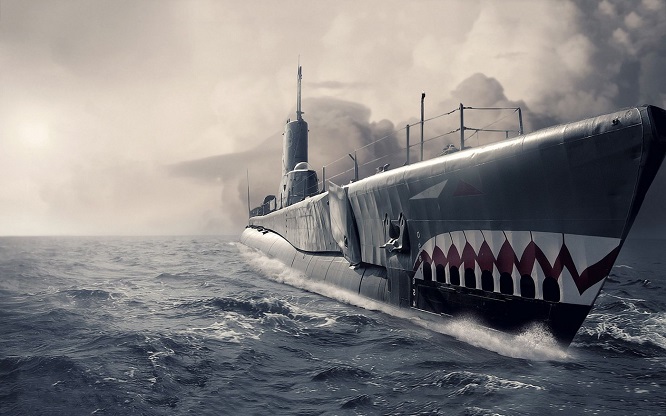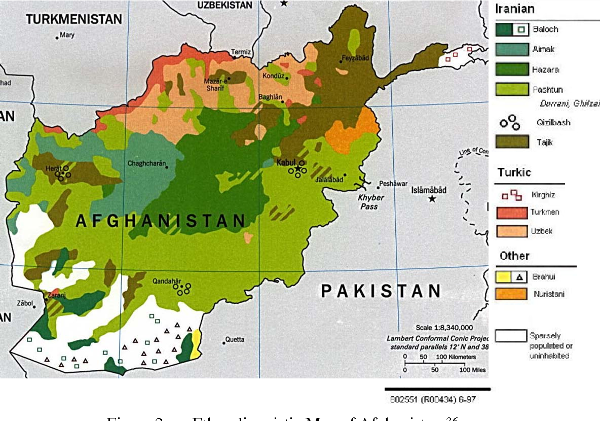The military competition has often served the international powers’ will to win strategic superiority. In the present conditions, this race has even intensified as the global developments more and more push the US power status towards shrinkage and the world is now observing the emergence of a new order with a multitude of powers. In the past few years, the global powers have been working hard to make high-tech military achievements mainly through severely increasing their military spending.
The maritime rivalry, meanwhile, appears to have singled itself out as the most important field. On March 9, General John Hyten, the chief of United States Strategic Command, answering a question on the current Mutually Assured Destruction (MAD) doctrine during a hearing on the US Strategic Forces Posture and the Fiscal Year 2019 Budget Request, said that his country’s submarines can “decimate” China and Russia.
"Our submarines — they do not know where they are and they have the ability decimate their countries if we go down that path," General Hyten said of the power of action of the US.
The comments came on the heels of remarks of President Vladimir Putin of Russia who during his annual state-of-the-nation speech unveiled Russia’s “invincible” state-of-the-art nuclear weapons. The Russian leader noted that Moscow built powerful new missiles that can be installed on the fighter jets and are capable of bypassing the currently-operated and even the future radar and defense systems. He also pointed to the newly-designed “undetectable” underwater drone. The underwater nuclear vehicle, Putin said, could make no sound and move very fast deep into the sea and evade being detected and targeted by any hostile weapons. He bragged that the new arms are resistant to even nuclear counter-attacks.
Moreover, on Saturday, a nuclear-powered attack submarine belonging to the Russian Navy “reached the very coastline” of the United States without being detected by any opposition force, a submarine commander, Sergey Starshinov, has revealed to a Russian military TV channel Zvezda. He said that the move came as part of military drills of the Russian submarines. The official noted that the vessel cruised close to an unspecified US military base was an Akula-class Shchuka-B submarine, which entered the Soviet Union’s navy service in 1986.
“Heartland theory” and geostrategic privileges
The Heartland theory, or formally the geographical pivot of history, was first presented by the prominent British theorist Halford John Mackinder in 1904. The Heartland lay at the center of the world island, stretching from the Volga to the Yangtze and from the Himalayas to the Arctic. Mackinderís Heartland was the area then ruled by the Russian Empire and after that by the Soviet Union, minus the Kamchatka Peninsula region, which is located in the easternmost part of Russia, near the Aleutian Islands and Kurile islands. Mackinder believed that a party that can dominate the heartland can dominate the whole world. The Heartland is encircled by an outward crescent demarcating the sea and the land. He added that the demarcation line was crucial to thwart attacks or even dominate the whole Heartland.
Russia’s special position that makes it be in the Heartland gives the country apparent geopolitical superiority. This motivated the Americans to deploy undetectable submarines on the Russian borders. This prompted a response from Moscow which rapidly upgraded its underwater fleet and built new submarines to shore up its deterrence and so not to be vulnerable to potential surprise strikes. The Russian leaders rented Syria’s Tartus port, established a military base, and deployed submarines to repel potential attacks from the marginal area of the Heartland.
Top marine powers
The powerful actors constantly assess their potentials in missile defense and other areas of military might like in the sea and air. They have their own calculations to improve their military power quantitatively and qualitatively. The US comes top on the list of marine powers with its 10 aircraft carriers, tens of guided missile cruisers, and 53 attack submarines. Russia ranks second with one aircraft carrier, 16 logistical submarines, and 32 attack submarines. And ranking third is China with one aircraft carrier, 18 combat submarines, and 40 guided missile frigates. And Japan comes fourth with its helicopter carrier, and 32 combat submarines, followed by Britain with an aircraft carrier and 8 attack submarines. The main criteria in the ranking are the number of aircraft carriers each country has. The US has 10 of them, but the point is that the US does not deploy all of them to a single station. Rather it has to distribute them between various strike groups in various parts of the world to save is global military dominance.
Submarine classes
The top-class submarines are the nuclear-powered ones, carrying cruise and ballistic missiles sometimes armed with nuclear warheads. Powered by atomic fuel, they do not need to come on the surface of the water for refueling. So this feature makes them impossible to detect and track. Also, there are ones using diesel-electric fuel for operation. This type cannot stay in perpetuity underwater and their diesel engines, empowering their electric propellers, need refueling. When the submarines sink, they switch off their diesel engines and start their electric engines. Without the consideration of the classes, North Korea has the world’s largest submarines fleet which has 78 ones serving its operations. The US has 72 and comes next, followed by China with 69 submarines. Owning 63, Russia comes fourth.
As the figures show, the US is not the top submarine power in term of numbers. Washington falls largely behind if the whole number of the submarines of the countries is combined the US finds posing threats to its national security. The four countries considered a threat by the new national security doctrine rank first to fifth in submarine ownership ranking.
But the US and Russian nuclear submarines can be hardly compared to each other. Because each is built to fit each country’s strategic interests and goals. For example, the US Seawolf-class submarines have the maximum depth rating of 487 meters. It has eight 660mm torpedo tubes for launching torpedoes and missiles.
On the opposite side stands Russia’s nuclear-powered Kazan submarine which is capable of intercepting ballistic missiles. Beside torpedoes firing, the vehicle can carry 32 Kalibr guided missiles.
China has Type 091, 092, 093, and 094 submarines. The Type 094 weighs 11,000 tons and is 135 meters long. The submarine has six torpedo tubes and can carry 12 ballistic missiles. The country has built over eight submarines of the four classes. Reports suggest that 12 others are under construction. Additionally, China operates three Type G093s that can vertically fire anti-ship missiles.
Why does the US threaten Russia and China?
China and Russia can set up the most dangerous alliance to the US global hegemony. But so far, the Chinese leaders avoided to exhibit a will to become a hegemonic power. The focus has been, instead, on the economy and mutual trade interactions. But the Chinese parliament has recently approved a law that will expand presidency of President Xi Jinping indefinitely after 2022, the year his second presidential term expires. President Xi has been thinking big to transform China into the world’s top economic power, which could more than any other time break the US hegemony. So, the USSTRCOM’S commander’s remarks more come from Washington’s serious worries about the two powers’ capabilities than from its self-confidence and might. The notable issue is Hyten’s ambiguity about the possible strike points which is seen as aimed to intimidate the Russian and Chinese leaders, while the fact is that the US cannot simultaneously address the two nuclear states. Moscow and Beijing’s submarines, combined in terms of class and number, can grant their owners superiority in a potential confrontation.
LINK: https://www.ansarpress.com/english/9729
TAGS:































 Violation of the sovereignty and rights of afghan citizens by America
Violation of the sovereignty and rights of afghan citizens by America




